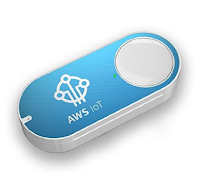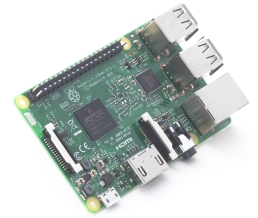There's a lot going on in the world of Virtual Reality and Google want's to be one of the players. This fall they'll be releasing DayDream, a VR developer platform for Android and iOS.
Today, their VR product is Cardboard, a VR 'headset' that you can use with your smartphone and an app for a cheap VR experience. Cardboard is what it says - a cardboard box that you fold into a viewer that you insert your phone into.
This week they announced support for larger phones like the iPhone 6 with Cardboard V2. They also announced a new app and an SDK for iOS devices.
The app is available on the iTunes store and Google Cardboard is available at https://vr.google.com/cardboard/get-cardboard
Have you tried it out yet?
If you can think it, you can do it!
Technology is moving fast - sometimes, you need a leg up!
Thursday, May 26, 2016
Tuesday, May 24, 2016
Painting with light: Google Tilt Brush
 There is some cools stuff going on in virtual reality. And one of the potential applications is art/design.
There is some cools stuff going on in virtual reality. And one of the potential applications is art/design. Sculptors have used physical media for thousands of years to create 3D objects. Now Google has Tilt Brush -- it can provide artists with a 3D canvas for painting with light.
Really, the video says it all: https://youtu.be/TckqNdrdbgk
For more information see: https://www.tiltbrush.com
Friday, May 20, 2016
Lessons from Dev/Ops
I've really been enjoying the Dev/Ops role I started around the first of the year. I'm on a great team, we have interesting projects, I'm learning a lot and enjoying riding the edge of chaos.
I thought I'd share my top dozen or so early lessons, in no particular order.
1. You don't have to know everything, but you have to know how to find it. Of course you pick up techniques and patterns that you can apply to other problems, but just knowing where to find answers is probably better than remembering them all.
2. Document what you've learned. Other people might be interested & you might have to do something similar in the future. Knowledge grows in value as you share it.
3. When in doubt, try it out - and then use the error messages and logs to figure out what you did wrong. Use stubs to prove concepts before devoting a lot of time debugging complex stuff.
4. Take backups before you commit something you can't recover from (or even before you commit to something you think you can recover from.)
5. StackOverflow is your friend.
6. Making something good enough is much faster than making something perfect. Making something better is easier than making something perfect.
7. Besides, making something perfect is a waste of time, because it's probably going to be obsolete before too long.
8. Ask for help when you need it, but spend the time learning what you don't know first. You'll have more credibility and learn more if you try stuff that doesn't work before you ask questions. Also, don't spend more than a couple of hours running down rabbit holes...
9. Try stuff out in a safe environment - do it on your PC before you do it on a server. Try it in a sandbox before you try it on the development server. Test everything.
10. Automate the tedious stuff - make tools to do stuff you have to do more than once. Document the tools.
11. When something "should" work, reality always wins. It really shouldn't work, or it would be working already... Nothing is magic. If something broke once, it will break again unless you really fix it. Be honest with yourself about this stuff.
12. Get comfortable with github.
13. Delete something really important early in your tenure, just to get it out of the way...
Other obvious ones I missed?
I thought I'd share my top dozen or so early lessons, in no particular order.
1. You don't have to know everything, but you have to know how to find it. Of course you pick up techniques and patterns that you can apply to other problems, but just knowing where to find answers is probably better than remembering them all.
2. Document what you've learned. Other people might be interested & you might have to do something similar in the future. Knowledge grows in value as you share it.
3. When in doubt, try it out - and then use the error messages and logs to figure out what you did wrong. Use stubs to prove concepts before devoting a lot of time debugging complex stuff.
4. Take backups before you commit something you can't recover from (or even before you commit to something you think you can recover from.)
5. StackOverflow is your friend.
6. Making something good enough is much faster than making something perfect. Making something better is easier than making something perfect.
7. Besides, making something perfect is a waste of time, because it's probably going to be obsolete before too long.
8. Ask for help when you need it, but spend the time learning what you don't know first. You'll have more credibility and learn more if you try stuff that doesn't work before you ask questions. Also, don't spend more than a couple of hours running down rabbit holes...
9. Try stuff out in a safe environment - do it on your PC before you do it on a server. Try it in a sandbox before you try it on the development server. Test everything.
10. Automate the tedious stuff - make tools to do stuff you have to do more than once. Document the tools.
11. When something "should" work, reality always wins. It really shouldn't work, or it would be working already... Nothing is magic. If something broke once, it will break again unless you really fix it. Be honest with yourself about this stuff.
12. Get comfortable with github.
13. Delete something really important early in your tenure, just to get it out of the way...
Other obvious ones I missed?
Wednesday, May 18, 2016
Control your water heater from your gas grill...
One interesting thing about internet of things things is that things can talk to other things.
I just saw an announcement from Wemo and Nest that talks about how you can use your Nest thermostat to control your lights. For example, when Nest detects that no one's home it can signal Wemo to turn off (or on) a light. Conversely, if you're in the Wemo app you can adjust your thermostat.

While this is interesting and may be somewhat useful, it brings to mind one of the challenges with the Internet of Things: someone has got to connect these things. And for the time being that someone is you.
In order to connect these devices to make them work together you need to use apps - one (or more) per device. That's just awful, but perhaps not as bad as having to use a Cisco or AT&T all-in-one-ring-to-rule-them-all type app...
What do you think? Is the marginal usefulness of these connected things worth the hassle of learning, using, maintaining and securing multiple apps?
I just saw an announcement from Wemo and Nest that talks about how you can use your Nest thermostat to control your lights. For example, when Nest detects that no one's home it can signal Wemo to turn off (or on) a light. Conversely, if you're in the Wemo app you can adjust your thermostat.
While this is interesting and may be somewhat useful, it brings to mind one of the challenges with the Internet of Things: someone has got to connect these things. And for the time being that someone is you.
In order to connect these devices to make them work together you need to use apps - one (or more) per device. That's just awful, but perhaps not as bad as having to use a Cisco or AT&T all-in-one-ring-to-rule-them-all type app...
What do you think? Is the marginal usefulness of these connected things worth the hassle of learning, using, maintaining and securing multiple apps?
Monday, May 16, 2016
Not losing your Apple Pencil
Finally, I'm able to use a stylus with an iPad - it's the Apple Pencil and it works great. I had tried a number of active and passive stylii on previous iPads, but kept going back to paper - until now: I've almost weaned myself completely from pen and paper. It really works well (really well!)
There are some problems with the Apple Pencil. It's expensive ($100), it only works with an iPad Pro (which are also expensive), it has a power adapter that is prone to leave your Apple Pencil if you leave it attached - apparently Apple didn't consider this possibility as they don't provide replacements (TechMatte sells a M-USB to F-Lightning cable for $10, though.) Finally, Apple doesn't provide even a clip to secure your Pencil to anything, and it rolls quite well - perhaps off your table and into an air handling vent...

But, there's an ingenious fix for this last one. It's a cover that your Apple Pencil slips into that has a magnet. This magnet affixes the pencil quite firmly to your cover or directly to the iPad so that you can carry it around.
It works great, comes in several colors and costs about $17, available at https://www.moxiware.com/products/apple-pencil-magnet
I could probably make my own with a magnet and some heat-shrink tubing, but I don't think I could make one anywhere near as neat looking.
There are some problems with the Apple Pencil. It's expensive ($100), it only works with an iPad Pro (which are also expensive), it has a power adapter that is prone to leave your Apple Pencil if you leave it attached - apparently Apple didn't consider this possibility as they don't provide replacements (TechMatte sells a M-USB to F-Lightning cable for $10, though.) Finally, Apple doesn't provide even a clip to secure your Pencil to anything, and it rolls quite well - perhaps off your table and into an air handling vent...

But, there's an ingenious fix for this last one. It's a cover that your Apple Pencil slips into that has a magnet. This magnet affixes the pencil quite firmly to your cover or directly to the iPad so that you can carry it around.
It works great, comes in several colors and costs about $17, available at https://www.moxiware.com/products/apple-pencil-magnet
I could probably make my own with a magnet and some heat-shrink tubing, but I don't think I could make one anywhere near as neat looking.
Friday, May 13, 2016
Amazon AWS IoT Button announced and sold out...
About a year ago, I wrote about Amazon Dash - it's the dedicated "button" that orders products when you press it. (http://mark-amos.blogspot.com/2015/07/interesting-device-probably-overkill.html)
It's really kind of cool for things like laundry detergent, or other consumables that you might otherwise forget to put on your shopping list.
 They've now released a programmable version that you can hook up to devices in your Amazon account. I.e. instead of ordering a product when you press it, you can configure it to do anything that you can do from AWS.
They've now released a programmable version that you can hook up to devices in your Amazon account. I.e. instead of ordering a product when you press it, you can configure it to do anything that you can do from AWS.
For example, you could connect it to a garage door opener or home security system. You could start/stop or launch computing resources on AWS. You could start and stop apps or otherwise initiate action using Lambda or SES or other AWS services.
They're selling them for $19.95, but apparently they've gone like hotcakes and no word when there will be more. They're the hottest thing since the Raspberry Pi!
Go to https://www.amazon.com/dp/B01C7WE5WM for more information.
It's really kind of cool for things like laundry detergent, or other consumables that you might otherwise forget to put on your shopping list.
 They've now released a programmable version that you can hook up to devices in your Amazon account. I.e. instead of ordering a product when you press it, you can configure it to do anything that you can do from AWS.
They've now released a programmable version that you can hook up to devices in your Amazon account. I.e. instead of ordering a product when you press it, you can configure it to do anything that you can do from AWS.For example, you could connect it to a garage door opener or home security system. You could start/stop or launch computing resources on AWS. You could start and stop apps or otherwise initiate action using Lambda or SES or other AWS services.
They're selling them for $19.95, but apparently they've gone like hotcakes and no word when there will be more. They're the hottest thing since the Raspberry Pi!
Go to https://www.amazon.com/dp/B01C7WE5WM for more information.
Monday, February 29, 2016
New Pi in town
 They just keep rolling them out.
They just keep rolling them out. Today Raspberry Pi announced a new model: Pi 3 Model B. It's a 1.2 GHz, 64-bit quad-core that yields a 50% performance increase over Pi 2. They've stuck with their $35 price point even though the new version has built-in WiFi and Bluetooth 4.1.
Another great device for Internet of Things applications that need the added power!
They're available from the usual sources (element14, RS, etc.)
Subscribe to:
Comments (Atom)

